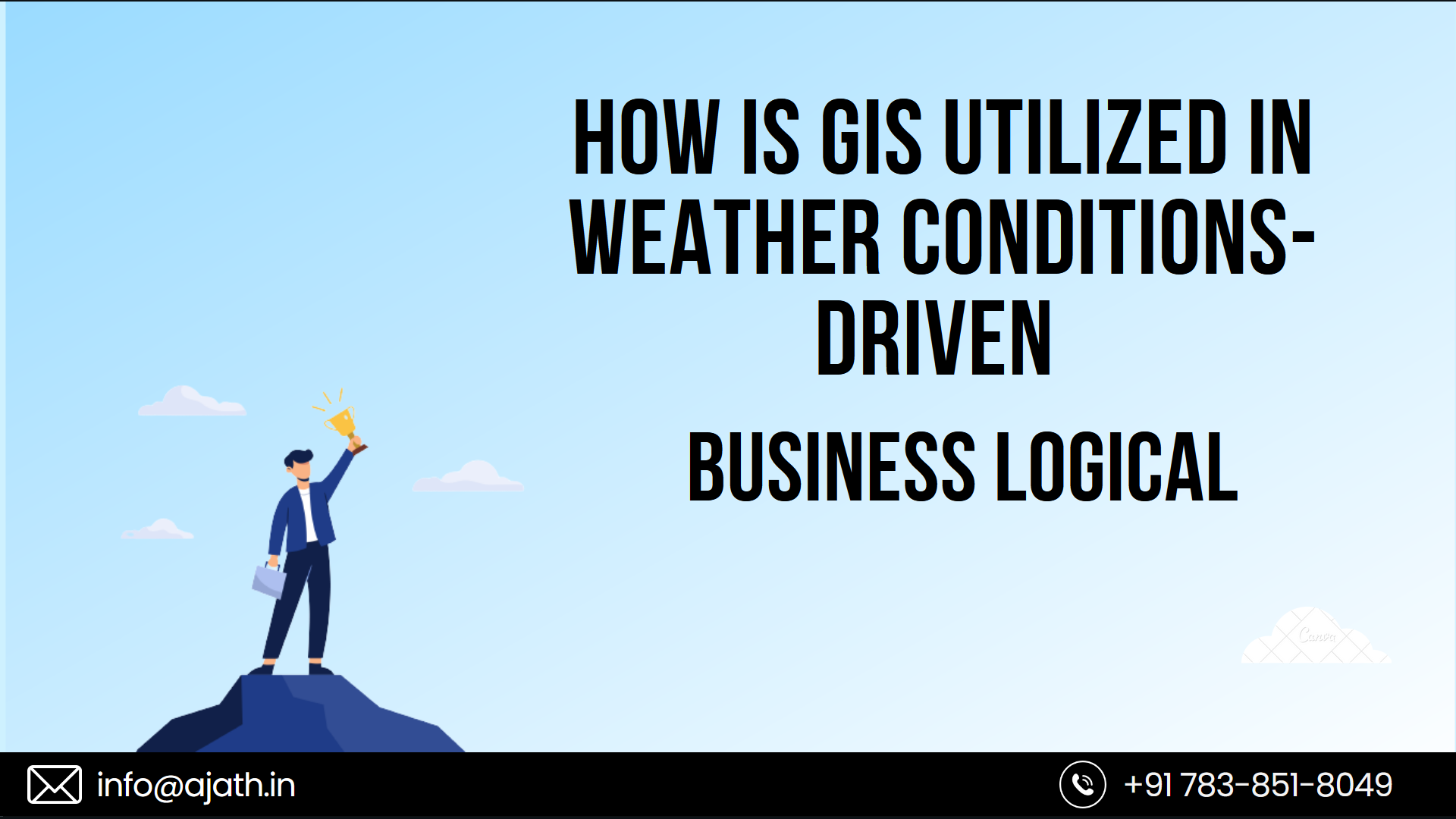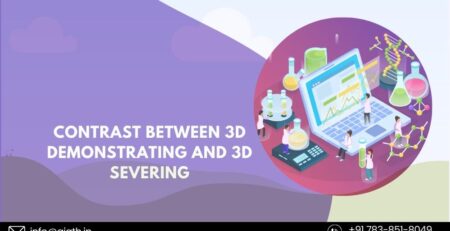How is GIS utilized in weather conditions driven business logical
Weather conditions assumes an essential part in forming our reality, impacting day to day existence, horticulture, transportation, and, all the more critically, different businesses. Organizations are progressively understanding the worth of climate driven business examination in going with information informed choices. Geographic Data Frameworks (GIS) have turned into a urgent device in bridling climate information for examination, giving bits of knowledge that can drive key choices, functional enhancements, and hazard moderation. In this far reaching investigation of the convergence of GIS and climate driven business examination, we will analyze how organizations across different areas influence GIS to open the capability of climate information. This article expects to explain the idea, exhibit the applications, and feature the critical advantages of coordinating GIS into climate driven business examination.
I. Grasping Climate Driven Business Investigation
Climate driven business examination alludes to the act of incorporating climate information with business information to settle on informed choices and gain an upper hand. It includes gathering, examining, and deciphering climate data to anticipate and comprehend what weather conditions mean for business activities. Generally, it is tied in with transforming climate information into significant experiences. To outfit this power successfully, numerous organizations depend on GIS, which is the innovation that empowers the spatial examination of climate information.
1.1 The Job of GIS in Climate Driven Business Examination
GIS is a framework intended to catch, store, break down, and oversee spatial and geographic information. It isn’t just a guide making instrument yet in addition a refined stage for spatial examination. GIS gives a structure to incorporating information from various sources, and it offers instruments for envisioning, questioning, and breaking down the information. When applied to climate driven business examination, GIS empowers associations to overlay climate information on their current geographic information. This reconciliation can uncover important bits of knowledge about what atmospheric conditions mean for their activities.
1.2 Key Ideas and Parts of Climate Driven Business Investigation
Prior to digging into explicit applications, it’s fundamental to comprehend the vital ideas and parts of climate driven business investigation:
1.2.1 Climate Information Sources
Climate information is gathered from different sources, including government organizations, weather conditions stations, satellites, and distant sensors. This information incorporates data, for example, temperature, dampness, precipitation, wind speed, and that’s just the beginning.
1.2.2 Geographic Information
Geographic information incorporates data about the area of resources, foundation, and other significant elements. This information can be as guides, geographic facilitates, or addresses.
1.2.3 Spatial Investigation
Spatial investigation is the most common way of inspecting geographic information to recognize examples, connections, and patterns. It assists associations with understanding how weather conditions influences their activities in unambiguous areas.
1.2.4 Choice Emotionally supportive networks
Choice emotionally supportive networks (DSS) are programming apparatuses or stages that help associations in settling on informed choices. With regards to climate driven business investigation, DSS frequently consolidate GIS abilities to give bits of knowledge in view of climate information.
1.2.5 Prescient Displaying
Prescient displaying includes utilizing verifiable climate information to make models that conjecture future weather patterns. These models can be utilized to guess what weather conditions might mean for business tasks.
II. Uses of GIS in Climate Driven Business Examination
The uses of GIS in climate driven business examination are different and reach out across various areas. Beneath, we investigate a portion of the key regions where GIS is having a tremendous effect.
2.1 Horticulture
Horticulture is exceptionally climate subordinate. Ranchers need to know when to plant, flood, and collect their harvests to improve yields. GIS can furnish ranchers with ongoing climate data, assisting them with settling on informed choices. For example, GIS can assist with deciding the best opportunity to establish a particular harvest in view of verifiable weather conditions, soil conditions, and weather conditions figures. Furthermore, GIS can help with observing soil dampness and evaluating the gamble of bugs and illnesses in view of atmospheric conditions.
2.2 Energy
The energy area depends on climate information to come to basic conclusions about energy creation, dispersion, and utilization. GIS is utilized to follow climate related factors like breeze speed, sun powered radiation, and temperature, which influence energy age. For instance, wind ranches and sun based power plants use GIS to decide the most reasonable areas for establishments. GIS can likewise help energy organizations foresee and oversee blackouts brought about by serious climate occasions.
2.3 Protection
Insurance agency use GIS to survey and alleviate chances related with climate related occasions. By examining authentic climate information, protection suppliers can decide the probability of cataclysmic events, like typhoons, floods, and fierce blazes. This data is critical for estimating approaches and overseeing guarantee payouts. Moreover, GIS assists guarantors with making precise floodplain maps, empowering them to give better inclusion and evaluate potential flood takes a chance for policyholders.
2.4 Retail and Store network
Retail organizations are impacted by climate in different ways. For example, weather patterns can impact interest for occasional items like apparel or influence supply chains through disturbances in transportation and coordinated factors. GIS assists retailers with breaking down weather conditions gauges to upgrade stock administration and production network activities. This permits them to change stock levels, dispersion courses, and staffing in light of expected climate related changes in client conduct.
2.5 Transportation
The transportation business intensely depends on climate data to guarantee protected and effective tasks. Aircrafts, for instance, use GIS to follow constant weather patterns and plan flight courses that stay away from disturbance and unfavorable climate. Also, delivering organizations use GIS to screen sea conditions, assisting vessels with exploring tempests and high oceans. Street transportation benefits from climate driven business examination too, with GIS giving experiences into street conditions and expected dangers, especially in winter when snow and ice are pervasive.
2.6 Land
Land is another area where GIS assumes a basic part in climate driven business examination. Property estimations and market request can be affected by elements, for example, environment, flood hazard, and temperature limits. Realtors use GIS to survey these dangers and give clients informed choices about property speculations. Furthermore, GIS can be utilized to plan and envision environmental change influences, for example, ocean level ascent, empowering better land use arranging.
III. Advantages of Coordinating GIS into Climate Driven Business Investigation
The reconciliation of GIS into climate driven business investigation offers a few particular benefits for associations.
3.1 Improved Independent direction
GIS gives leaders a visual portrayal of how weather conditions influences their tasks. This visual setting assists them with pursuing more educated choices by thinking about climate related factors close by other business information. For example, a corporate store can utilize GIS to picture what weather conditions mean for people walking through in their stores, prompting better choices with respect to stock administration and showcasing efforts.
3.2 Better Gamble The board
Understanding and alleviating climate related gambles is essential for some enterprises. GIS can help associations recognize and survey likely dangers, whether it’s the gamble of flooding in a specific region or the effect of outrageous temperatures on foundation. This proactive methodology permits organizations to carry out risk moderation procedures and secure their tasks.
3.3 Functional Productivity
Climate driven business examination, fueled by GIS, can prompt superior functional proficiency. By expecting climate related difficulties, associations can more readily design their assets and tasks. For instance, service organizations can proactively trim trees close to electrical cables to forestall blackouts during storms. Additionally, agrarian organizations can streamline water system timetables to moderate water and increment crop yields.
3.4 Expense Investment funds
Proficient asset portion and hazard the executives empowered by GIS can bring about significant expense investment funds. For instance, energy organizations that utilization GIS to streamline the position of wind turbines can increment energy creation while lessening establishment and upkeep costs. Also, insurance agency that precisely evaluate flood dangers can cost approaches all the more seriously and keep away from unreasonable case payouts.
3.5 Upper hand
Associations that embrace climate driven business investigation and GIS gain an upper hand. They can answer all the more really to changing weather patterns, which can prompt expanded consumer loyalty and piece of the pie. In exceptionally serious areas like retail, remaining in front of climate related difficulties can be a key differentiator.
3.6 Maintainable Practices
For organizations zeroed in on maintainability, GIS can be instrumental in taking on ecologically mindful practices. By understanding the natural effects of weather conditions, associations can settle on informed choices to decrease their carbon impression and add to a greener future. This incorporates choices connected with energy productivity, squander decrease, and asset preservation.
IV. Challenges and Future Developments
While GIS and weather-driven business analytics offer numerous benefits, they also come with challenges and areas for future development.
4.1 Data Quality and Accuracy
The accuracy and quality of weather data are essential for reliable analysis. Weather data from various sources may vary in accuracy and coverage, which can affect the reliability of GIS-based analytics. Efforts to improve data quality and consistency, including data assimilation and quality control, will continue to be a focus.
4.2 Integration and Compatibility
Integrating GIS with existing business systems and data sources can be complex and requires careful planning. Ensuring that GIS technology is compatible with other software platforms and databases is crucial for seamless operations.
4.3 Scalability
As businesses grow, their GIS and weather-driven analytics systems must be able to scale to handle larger volumes of data and increased complexity. Scalability is a concern for companies that are expanding their operations or expanding into new regions.
4.4 Data Privacy and Security
Handling weather data and integrating it with business data necessitates robust data privacy and security measures. Organizations must safeguard sensitive information and adhere to data protection regulations.
4.5 Access to Advanced Technology
Access to advanced GIS technology and expertise can be a challenge for smaller businesses. Addressing this issue requires greater availability of user-friendly GIS tools and training.
4.6 Predictive Analytics and Machine Learning
The future of weather-driven business analytics will likely involve more sophisticated predictive analytics and machine learning. These technologies can provide deeper insights and allow businesses to make more accurate forecasts based on historical data.
4.7 Climate Change Adaptation
Given the increasing impact of climate change on weather patterns, GIS and weather-driven analytics will play a crucial role in helping businesses adapt to changing conditions. Strategies for climate change adaptation will become an integral part of weather-driven business analytics.
Conclusion
Weather-driven business analytics, empowered by GIS, is transforming the way organizations across various industries make decisions, mitigate risks, and improve operations. The integration of weather data with geographic information provides valuable insights that enhance decision-making, reduce costs, and give businesses a competitive edge. While there are challenges to overcome, the benefits of using GIS in weather-driven analytics are evident. As technology continues to advance and our understanding of weather patterns deepens, the role of GIS in shaping the future of business analytics is set to grow. Businesses that embrace this intersection of weather and geographic data will be better equipped to thrive in an increasingly dynamic and weather-sensitive world. Whether it’s optimizing supply chains, managing risk, or fostering sustainability, GIS and weather-driven business analytics are a powerful combination for success.
In a rapidly changing world, where the impact of weather events on businesses continues to evolve, GIS serves as a versatile and adaptive tool that equips organizations to navigate the challenges and opportunities presented by weather-driven business analytics. As we move forward, it is clear that GIS will remain at the forefront of this transformative field, providing invaluable insights that drive businesses towards more informed, efficient, and sustainable operations.













Leave a Reply